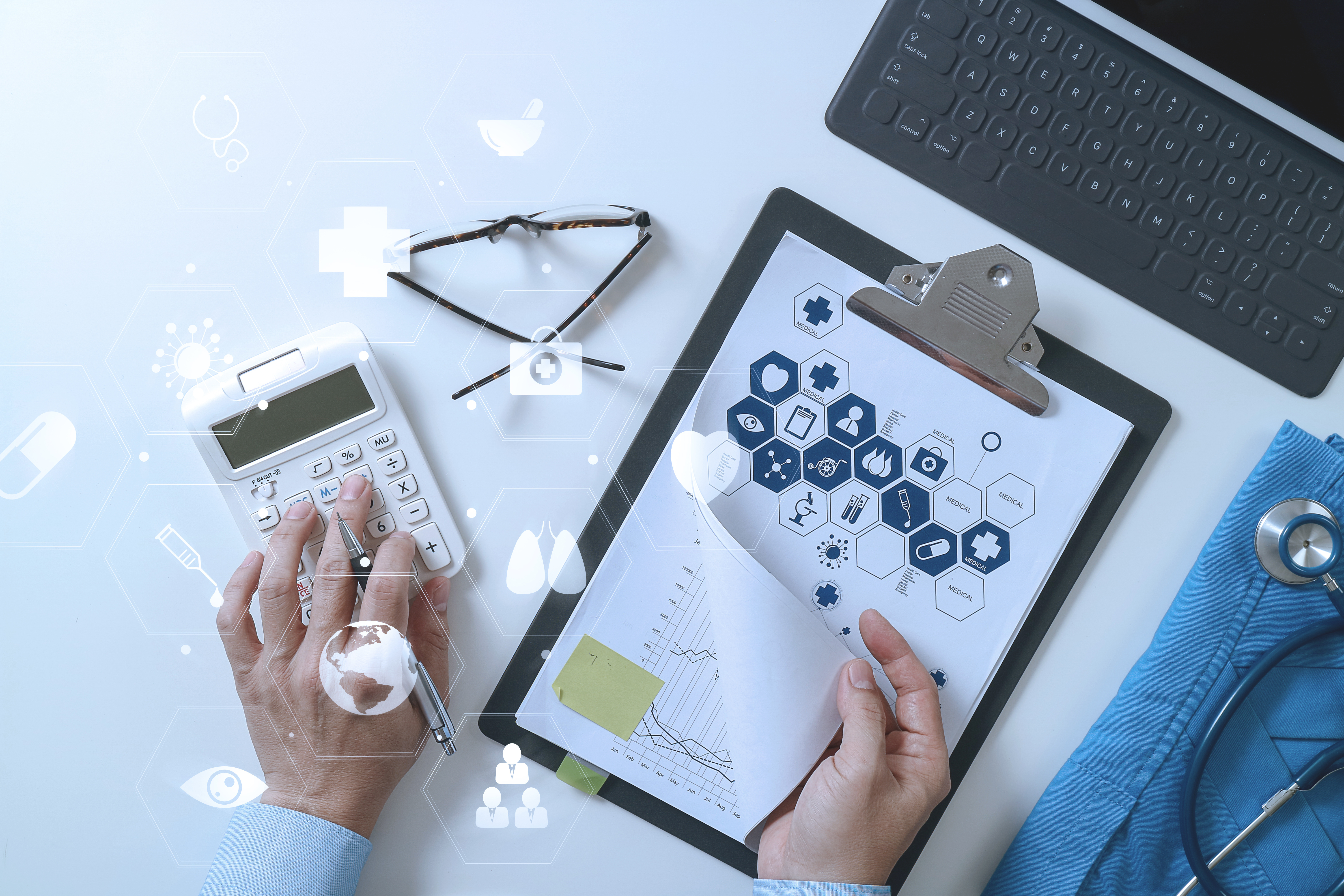As a doctor, you know that providing top-notch care often means investing in high-quality medical equipment—and let’s be honest, that can get expensive. Whether you’re opening a new practice, upgrading your tools, or expanding your services, the price of medical devices can feel overwhelming. Fortunately, there are smart ways to finance this equipment through banks, helping you grow your practice without breaking the bank. Let’s explore your options!
Medical practice equipment financing: Why Doctors Should Consider Financing Medical Equipment
As a healthcare professional, your reputation depends on the tools you use. From diagnostic machines like MRIs to surgical instruments, modern equipment plays a crucial role in delivering the best and the most professional patient care. However, acquiring such equipment outright can be financially burdensome for many doctors, especially when you’re already managing big operational expenses and overhead costs. Are you wondering how doctors can finance medical equipment?
Financing medical equipment for doctors allows them to obtain the tools they need while preserving their working capital. Instead of draining your savings or taking on large amounts of debt, financing options through banks offer manageable terms that can support your practice’s growth.

The Top Financing Options for Doctors: How to finance expensive medical equipment with loans?
- Medical Equipment Loans
Medical equipment loans are made for physicians who need money for the purchase of new or upgraded equipment. They allow you to borrow the necessary funds and repay them over a set period, usually between one to five years. The bigger benefit is that the loan is typically secured by the equipment itself, which can make it easier to qualify, especially for those with solid credit.
Why It Works for Medical Professionals:
- Fixed monthly payments, making budgeting easy
- Competitive interest rates, especially for well-established practices
- A fast and straightforward application process
-
Flexibility to purchase a variety of equipment, from diagnostic tools to surgical instruments in a short period of time
Considerations:
- A strong credit history may be required to get good terms
- Newer practices or smaller loans could face higher interest rates
2. Leasing Medical Equipment for Doctors
If you’re looking to avoid a large upfront payment or prefer flexibility, leasing might be a good option. When you lease medical equipment, you essentially “rent” it for a fixed term, after which you can return, renew, or purchase the equipment. Leasing allows you to get the latest technology without the commitment of full ownership.
Why It Works for Doctors:
- Lower monthly payments compared to loans
- No large down payment required
- Flexibility to upgrade equipment at the end of the term
- Equipment maintenance may be covered
Considerations:
- You don’t own the equipment, and the total cost over time can be higher
- Some leases may restrict modifications or usage
3. SBA Loans for Medical Equipment
For medical professionals who need substantial financing, Small Business Administration (SBA) loans are a great option. The SBA offers two main loan programs that can be used for purchasing medical equipment: the SBA 7(a) and SBA 504 loans. These loans are well-suited for established practices looking to finance larger purchases at favorable rates.
Why It Works for Physicians:
- Lower interest rates than traditional loansLonger repayment terms (up to 25 years for SBA 504)
- Easier to qualify for compared to conventional loans
- Considerations:
- Application process can be lengthy
4. Lines of Credit
A business line of credit offers flexibility, giving you access to funds as needed. If you don’t need a lump sum to purchase equipment but prefer ongoing access to capital, a line of credit might be the best solution. This option allows you to borrow up to a predetermined limit and pay interest only on the amount you use.
Why It Works for Doctors:
- Provides flexible access to funds
- Ideal for smaller equipment purchases or other business needs
- Pay interest only on what you borrow
Considerations:
- Can come with higher interest rates than other options
- Requires strong creditworthiness

Bank Credit Cards for Medical Equipment Financing
For doctors who need to finance smaller equipment purchases or who are just starting to grow their practice, using a business credit card could be a practical solution. Many business credit cards offer promotional 0% APR periods for new purchases, which can help manage costs in the short term. Why It Works for Doctors:
- Quick and easy access to funds
- Rewards programs or cashback on purchases
- Ideal for smaller or emergency equipment needs
Considerations:
- Interest rates can skyrocket once the introductory period ends
- Higher risk of debt accumulation if balances are not paid off promptly
Medics must remember that while financing medical equipment can be a great investment in their practice, it’s important to maintain a balance between borrowing and overall financial health. Taking on too much debt can strain cash flow, while underinvesting in essential equipment may limit patient care and practice growth. Keeping the right balance requires careful financial planning and a clear understanding of loan terms. To make informed decisions and manage finances effectively, doctors can explore more tips and strategies in our in-depth article on financial planning for healthcare professionals.
How to Choose the Right Financing Option for Your Practice
When selecting the best financing option for your medical equipment, it’s crucial to evaluate a few key factors to ensure you make a decision that supports your practice’s growth and financial health.
1. Consider Your Medical Equipment Needs
If you’re upgrading a single device or purchasing a small amount of medical equipment, leasing or using a business line of credit might be a practical choice. These options provide flexibility for smaller purchases or short-term use. However, for larger investments or long-term needs, financing through a medical equipment loan or an SBA loan for doctors may be more suitable, as they allow you to own the equipment outright.
2. Evaluate Your Practice’s Cash Flow
If you’re just starting your medical practice or are managing tight cash flow, leasing medical equipment can help reduce upfront costs. Leasing typically comes with lower monthly payments and no large down payment. For established practices with stronger finances, taking out a medical equipment loan can help you build equity by owning the equipment outright while spreading costs over time.Check Your Credit Score

3. Check Your Credit Score
Lenders often review your credit score when assessing your eligibility for medical equipment financing. A strong credit score can unlock better loan terms and lower interest rates. If your credit score isn’t ideal, options such as leasing medical equipment or applying for SBA loans for healthcare professionals can offer greater flexibility and accessibility.
4. Understand Fees and Loan Terms
Before committing to any financing option, always read the terms carefully. Pay close attention to interest rates, repayment schedules, and potential fees, such as early repayment penalties for late payment charges. Ensuring transparency with your lender will help you avoid surprises and better plan your practice’s finances.
By factoring in these considerations, you can confidently choose a medical equipment financing option that aligns with your budget and growth goals, whether it’s a loan, lease, or line of credit.
How Financing Medical Equipment Can Drive Your Practice’s Growth
Investing in high-quality medical equipment isn’t just about keeping up with technology—it’s about making choices that benefit your patients, your team, and your bottom line. Financing medical equipment can help your practice grow in ways that go beyond the numbers:
- Better patient care: Upgrading to advanced equipment allows you to offer more precise diagnoses and effective treatments. This not only enhances patient outcomes but also builds trust and loyalty, showing your commitment to their health.
- Greater efficiency: New equipment can streamline your daily operations, making procedures smoother and allowing you to treat more patients in less time. That means improved productivity and increased profitability for your practice.
- Attracting new patients: Cutting-edge technology helps your practice stand out from the competition. Patients actively seek providers who offer the latest advancements, and your investment in modern tools can help position your practice as a leader in the field.
-
Financial flexibility: By financing your equipment, you can conserve your cash flow for other priorities, such as staff training, marketing, or facility upgrades. It’s a smart way to grow without stretching your budget too thin.
Medical practice equipment financing: Conclusion
Upgrading your medical equipment can feel like a big step, but financing makes it much more manageable. By spreading out the cost over time, you can keep your cash flow steady while still investing in the tools that help your practice grow.
Financing options like loans or leases let you make these upgrades without putting a strain on your budget. Plus, by preserving your capital, you can focus on other priorities, like hiring staff, expanding services, or improving your facilities. It’s all about setting your practice up for long-term success—offering better care for your patients today and preparing for tomorrow’s challenges.
Do you want to know more about managing finances as a doctor? Check our knowledge base and take care of your financial health!

